Grant Wood (1892-1942)
Get a Wood Certificate of Authenticity for your painting (COA) for your Wood drawing.
For all your Wood artworks you need a Certificate of Authenticity (COA) in order to sell, to insure or to donate for a tax deduction.
Getting a Wood Certificate of Authenticity (COA) is easy. Just send us photos and dimensions and tell us what you know about the origin or history of your Wood painting or drawing.
If you want to sell your Wood painting or drawing use our selling services. We offer Wood selling help, selling advice, private treaty sales and full brokerage.
We have been authenticating Wood and issuing certificates of authenticity since 2002. We are recognized Wood experts and Wood certified appraisers. We issue COAs and appraisals for all Wood artworks.
Our Wood paintings and drawings authentications are accepted and respected worldwide.
Each COA is backed by in-depth research and analysis authentication reports.
The Wood certificates of authenticity we issue are based on solid, reliable and fully referenced art investigations, authentication research, analytical work and forensic studies.
We are available to examine your Wood painting or drawing anywhere in the world.
You will generally receive your certificates of authenticity and authentication report within two weeks. Some complicated cases with difficult to research Wood paintings or drawings take longer.
Our clients include Wood collectors, investors, tax authorities, insurance adjusters, appraisers, valuers, auctioneers, Federal agencies and many law firms.
We perform Grant Wood art authentication, appraisal, certificates of authenticity (COA), analysis, research, scientific tests, full art authentications. We will help you sell your Grant Wood or we will sell it for you. Grant Wood was an American Regionalist painter born in Iowa to Quaker parents. He is perhaps best-known for his famous painting American Gothic. This painting was created at the height of his career and features all of the ironic and historical meanings that Wood liked to incorporate in his Regional paintings. The farmer in this painting was actually his dentist.
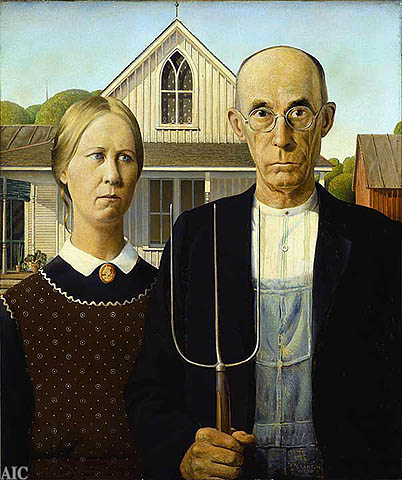
Wood’s father moved with his family from Iowa to Cedar Rapids in 1901. As a young boy, Wood discovered his talent for art and was very active in school. He created scenery for the school plays and also illustrated for his high school yearbook. With his friend Marvin Cone, Wood also volunteered often with the Cedar Rapids Art Association. Immediately after he graduated from high school, Wood left Cedar Rapids for Minneapolis, where he attended art school. Wood returned to Cedar Rapids in 1911 and was a teacher in a one room school house in the country.

In 1913, Wood moved to Chicago, where he attended the Art Institute. While in Chicago, Wood also worked for a silversmith. He was eventually called to duty and served in World War I as a camouflage painter. After the war, Wood returned to Cedar Rapids and taught art in the public school system. From 1920 to 1928, Wood travelled with his friend Marvin Cone to Europe, where they studied all of the current trends in European painting, focusing mostly on Impressionism.

In 1928, having been commissioned to make stained-glass windows for the Cedar Rapids Veterans Memorial Building, he traveled to Munich to supervise the windows’ production; there he encountered early Dutch painting, and was inspired to give up Impressionism in favor of his characteristic mature style. Wood was particularly influenced by Hans Memling’s use of repetition, color and smooth surfaces, and outlines became integral in Wood’s regional paintings of the American Midwest.
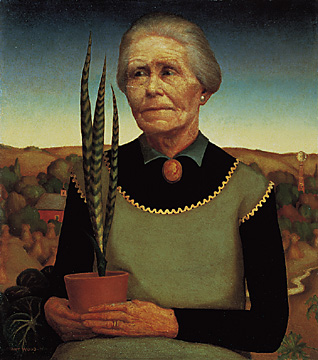
In 1932, Wood helped to found the Stone City Art Colony in Anamosa, Iowa, an art school and artists’ colony. It was here that Wood hoped others would come and create artworks also in a regional Midwest style. Wood also taught art at the University of Iowa from 1935 until his death in 1942.
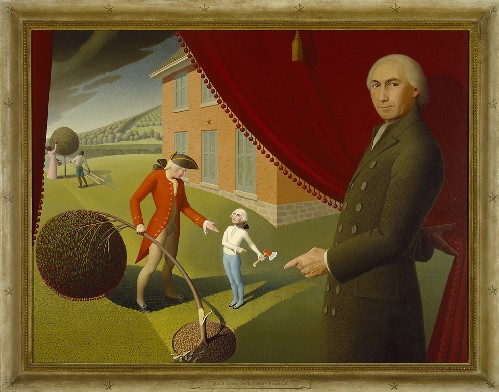
It was not until this time when Wood returned to his home state that his style would become solely regional. This return to Iowa signaled a change in his painting style, which would be both an ironic and affectionate look at rural country living and its history. Wood fully emerged himself in the country way of life, often wearing overalls when he would pose for pictures and envisioning himself as a farmer.
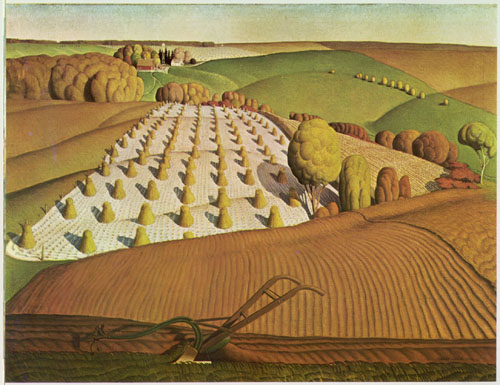

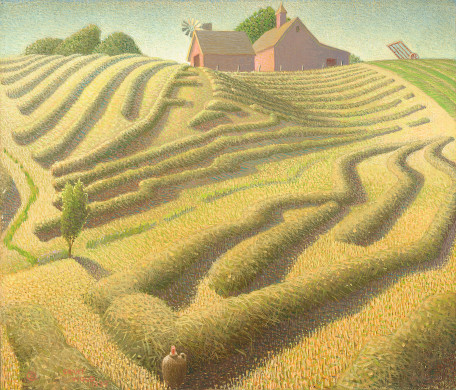
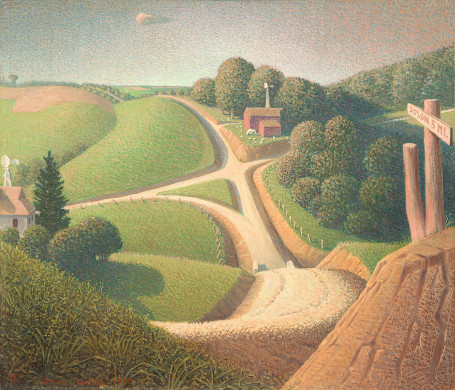

Throughout his life, Wood would continue to lecture on the concept of regional art and is today considered one of America’s leading Regional painters. Today, Wood’s work is housed all over the United States, especially in Iowa.
Still wondering about a rural Midwestern painting in your home? Contact us…it could be by Grant Wood.
Reviews
1,217 global ratings
5 Star
4 Star
3 Star
2 Star
1 Star
Your evaluation is very important to us. Thank you.
